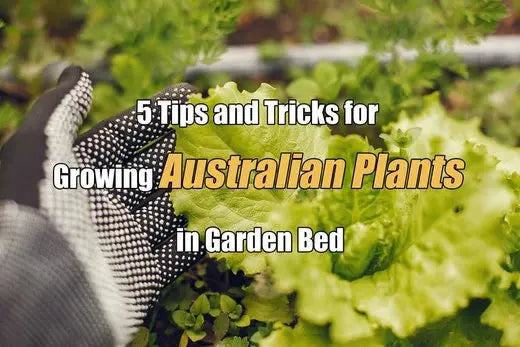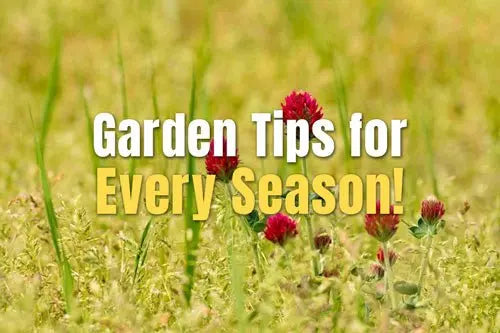The Best Time To Plant Vegetables in the Spring
By: Alya Koe
By: Alya Koe is a passionate gardener who has dedicated her life to spreading the joys of gardening to others. Through her writing, she shares her vast knowledge and experience with her readers, providing tips, tricks, and inspiration for cultivating beautiful gardens.
Spring is the perfect time to start growing vegetables. Unlike other seasons, spring is ideal for planting vegetables because the weather is generally mild and frost free. The soil in the spring is usually moist and warm enough for seedlings.
Besides having a plethora of health benefits, gardening in spring is also an excellent form of exercise that promotes well-being and relaxation.
Designing a garden pavilion with a built-in vegetable garden could be a great idea for those who want to enjoy fresh produce and outdoor living space. Before you get started, make sure you’ve got your soil prepped as outlined in our blog on how to prep soil for planting vegetables in the spring. Here are the 4 best times to plant vegetables in the spring.

What to plant in the spring
When the spring season arrives, it is the best time to plant vegetables. Aptly called as the growing season, spring is a season of rejuvenation and rebirth. It is a season when vegetables grow fast and thrive in warm weather. Additionally, vegetables are at their most flavorful and nutritious during this season. As a result, it makes sense to incorporate them into your diet during this season.
Start with lettuce and salad greens. These vegetables can be grown easily in any sunny garden or patio. They provide bright colors, delicious tastes, and nutrient-dense material for healthy eating. Choose vegetables that will mature quickly, such as carrots, beets, and radishes. These vegetables are easy to grow and have a short growing season. Plant potatoes in early morning or late evening when sunlight is optimal for growth.
Water vegetables in well-drained soil to encourage good root growth. Harden off your plants before the first frost date to protect them from cold weather.
When to plant vegetables in the spring
In the spring, planting vegetables is a great idea because the soil is warm and moist. This provides the perfect environment for planting early spring crops, such as lettuce, spinach, radishes, beets, peas, onions, and scallions. These crops are known as “rays” due to their ability to grow quickly in spring weather and then get larger when temperatures remain warm into summer.
Onions and scallions are also great crops to plant in spring because they can tolerate temperatures as low as -40°F without much damage.
Other crops that do well in spring include tomatoes, peppers, beans, peas, radishes, lettuce, cauliflower, cabbage, and kale. They all require full sun and warm temperatures to flourish.
If you're planting vegetables in spring for contrast seasonality on your farm or garden, consider planting winter vegetables like broccoli, Brussels sprouts, cabbage, cauliflower, leeks, turnips, radish, rutabagas, parsnips, and collards. These vegetables do well in colder weather and provide year-round contrast for metal raised garden beds in your farm or garden.
If you're planting vegetables for harvesting early in the season for a short window of time before the heat of summer sets in, planting them in early spring is a great option. This will allow them to grow slowly but steadily with ample sunshine and nutrients from the soil prior to the onset of high temperatures.
When is the best time to plant vegetables?
Spring is a great time to plant vegetables because the soil is still warm and moist. This is the ideal time to plant leafy greens such as collard greens, mustard greens, and turnip greens. These vegetables are easy to grow and can be harvested quickly after planting.
When springtime arrives, spring is a good time to plant root vegetables such as carrots, beets, and rutabagas. These vegetables can tolerate cold temperatures and can be harvested early in the spring.
Fall is also a great time to plant leafy vegetables such as lettuce, spinach, cabbage, and radishes. These vegetables are easy to grow and harvest quickly after planting.
Finally, winter is not a good time for planting vegetables because the soil is cold and wet. Rather than planting vegetable seedlings, consider purchasing them from a garden center or farmers' market instead. This way you can ensure they have been grown safely under optimal conditions.
How to plant vegetables in the spring
Spring is the ideal time to plant vegetables in the garden. This is when the weather is most favorable, the growing season is long, and the frost-free period begins. You can follow a soil-less vegetable gardening method to get the most out of your vegetable plants. This involves planting veggies in straight rows so they grow evenly and produce consistent yields. When planting vegetables in spring, be sure to water them regularly to promote healthy development. This will ensure the optimum growth and yield of your veggies.
How to prepare the soil for planting in the spring
Aerate the soil
Because spring planting is a good time to add organic matter to the soil, such as compost or aged manure, prior to planting, it's important to aerate the soil well. This will help break down any nutrients in the organic matter and help them be available to the plants.
Also read: Soil Preparation Guide for Spring.
Add lime
If you're planting vegetable crops in acidic soils, you should consider adding lime to the soil as a source. Doing so will increase the pH level and improve nutrient availability. Lime can be added in several ways, such as using a lime rock or limestone powder or sprinkling a soluble calcium mineral formulation on the surface of the soil before planting.
Sow seeds
Sow seeds at a depth that will allow them to grow deeper into the soil while avoiding wetting the seed coat. This will ensure that young vegetables have access to nutrients and sunlight as they grow.
Also read: How to Start Seeds in Spring?
Water well after sowing
For spring planting, it's vital to provide plenty of water for young vegetables. Keep the soil moist until germination, which should take place within a few days. Avoid weeding early in spring as young plants are more susceptible to damage from weeding.
Also read: When Is the Best Time of Day to Water the Raised Garden Bed?
Once vegetables are fully grown, refrain from watering them too much as this could result in leaves becoming limp and prone to drying out early. Overall, planting vegetables in spring is a great way to enjoy fresh vegetables throughout the year.
How long will it take to see results from planting vegetables in the spring?
It's true that vegetables planted in the spring produce larger and healthier plants than those planted in the fall or winter. However, be patient as it takes time for vegetable gardens to mature. The sooner you start planting vegetables, the sooner you will see results.
Start preparing your vegetable garden early in the season. Creating good soil is essential; be sure to pre-warm it before planting your vegetables to allow them to grow more quickly. Water your vegetable garden regularly while it is growing and fertilize it every two weeks once it has started to grow.
The spring is a great time to plant vegetables as they are able to support themselves without much care during spring and early summer. Besides, vegetables planted at this time last longer and are more nutritious. So don’t hesitate to give vegetables a try this season. Let them be your healthy source of food!
What are some vegetables that can be planted in the spring?
Asparagus
Asparagus is a high-yield vegetable that can be planted in the spring. It is capable of growing quickly and provides fresh vegetables all year round. Asparagus can be harvested early for springtime salads or as an accompaniment to other dishes.
Beets
Beets are root vegetables that can be planted in the spring. They grow quickly and have a sweet flavor. Beets are good for people with heart problems because they are low in cholesterol and sodium. Beets can be harvested early for springtime salads or as an accompaniment to other dishes.
Broccoli
Broccoli is a cruciferous vegetable that can be planted in the spring. It grows quickly and has a mild flavor. Broccoli is good for people suffering from chronic diseases because it contains cancer-fighting compounds called glucosinolates. These compounds help prevent cell damage caused by oxidative stress, which may lead to cancer development. The plant's edible flower buds are also a source of vitamin C and dietary fiber, making them a healthy addition to any diet.
Cauliflower
Cauliflower is a cruciferous vegetable that can be planted in the spring. It grows quickly and has a crisp texture. Cauliflower is good for people suffering from diabetes because it contains soluble fibers that may help control blood sugar levels when consumed as part of a healthy diet plan. The plant's edible flower buds are also a source of vitamin C and dietary fiber, making them a healthy addition to any diet.
When should you expect your vegetables to be ready to eat?
A spring vegetable is a vegetable that is grown during the spring season. Spring vegetables are typically early to mid-season vegetables, with radish and salad greens being the earliest and tomatoes being the last to be harvested. The growing season for spring vegetables is generally shorter than it is for summer vegetables.
The growing season for spring vegetables starts early in the year and can last up to three months. The early spring vegetables, such as salad greens and radishes, are ready earlier than the later vegetables, such as tomatoes. Of course, this depends on the region of the country in which you live. In general, spring vegetables are tastiest when they are young and fresh.
To harvest spring vegetables, simply clip off the desired amount. They should be harvested when they are tender and have leaves that are crisp but not browned. Be sure to water your vegetables regularly during the growing season to ensure a healthy crop.
Frequently Asked Questions
What are some benefits of planting vegetables in the springtime?
There are a few benefits of planting vegetables in the springtime. Firstly, the weather is generally warmer and drier during this time of year. This means that the soil is still warm and fertile, which is great for plant growth. Additionally, there is less competition from weeds, which makes it easier to cultivate your garden. Lastly, springtime is a good time to plant vegetables because there are fewer pests infesting the garden.
Conclusion
Time is your most valuable resource. We can’t change when spring arrives, but we can change how we use it. This includes planning ahead for spring vegetable planting, as well as preparing the soil and setting aside adequate space for veggies to grow. By planning early, you ensure that you get a jump-start on the season and have time to harvest your veggies before frost comes knocking at the door. To learn more about spring vegetable gardening, click here.


